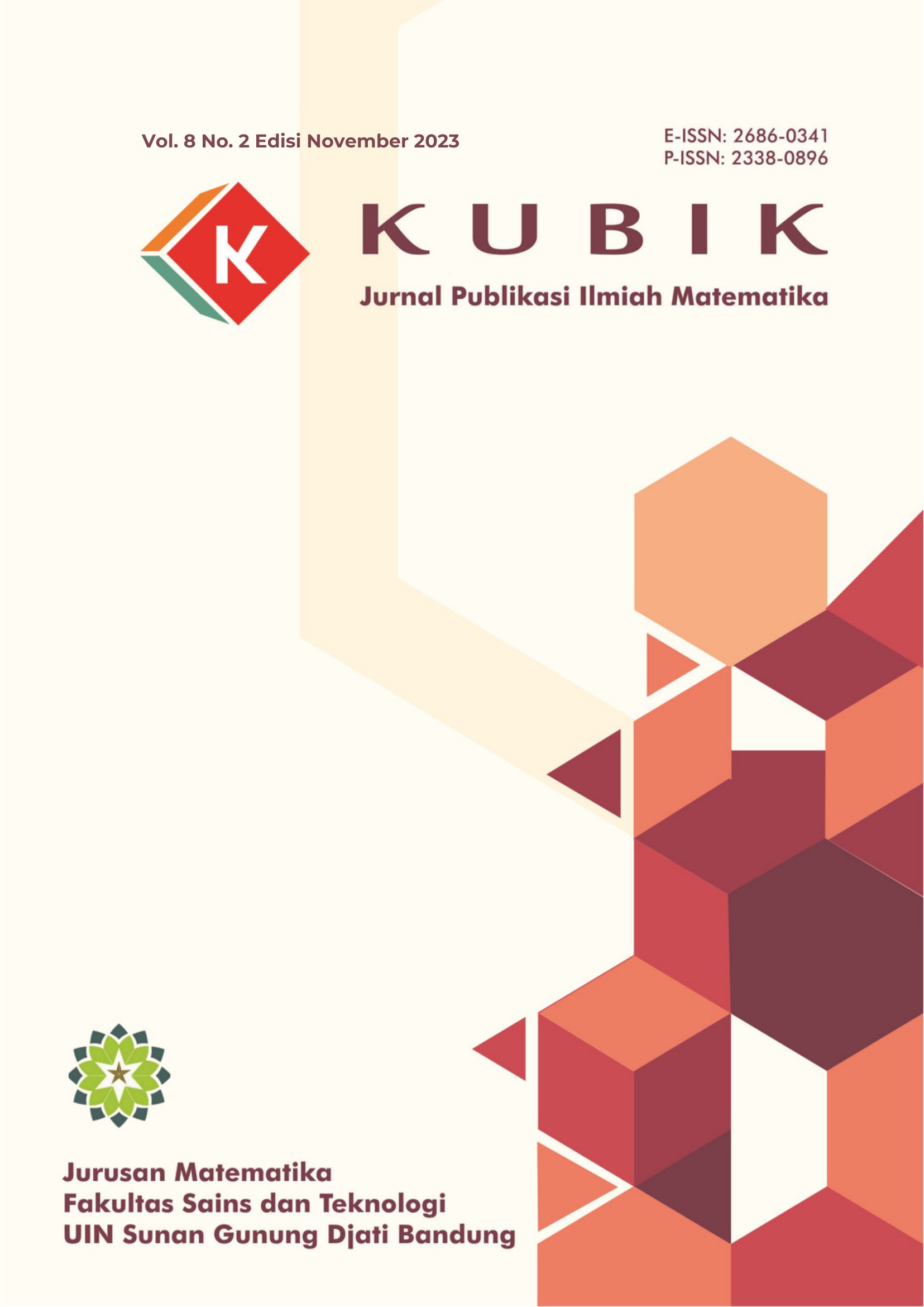The Effect of Virotherapy, Chemotherapy, and Immunotherapy to Immune System: Mathematical Modelling Approach
DOI:
https://doi.org/10.15575/kubik.v8i2.29521Keywords:
cancer, tumor, virotherapy, chemotherapy, immunotherapy, mathematical modellingAbstract
Medical research and therapeutic interventions continue to evolve, and one interesting area of study is the complex interaction among virotherapy, chemotherapy, and the immune system. Each treatment has its own advantages and disadvantages. In this study, a mathematical model was developed to describe how the immune system, tumor cells, and normal cells interact when all three types of therapy are used to treat cancer patients. To determine the effectiveness of various treatments, numerical simulations of eight different treatment strategies were performed. These simulations measured how much the concentration of immune cells, tumor cells, and normal cells decreased as a result of the treatment. Based on the numerical simulations performed, the application of the three types of therapy provided the greatest reduction (99%) in the concentration of tumour cells but also provided a significant reduction (68%) in the concentration of immune cells in the body.
References
W. Lin, Y. Zhao, and L. Zhong, “Current strategies of virotherapy in clinical trials for cancer treatment,†J. Med. Virol., vol. 93, no. 8, pp. 4668–4692, 2021.
G. M. Weir, R. S. Liwski, and M. Mansour, “Immune modulation by chemotherapy or immunotherapy to enhance cancer vaccines,†Cancers (Basel)., vol. 3, no. 3, pp. 3114–3142, 2011.
M. M. Alam, S. Chowdhury, J. T. Chowdhury, M. M. Hasan, M. A. Ullah, and S. F. Ahmed, “Tumor treatment with chemo-virotherapy and MEK inhibitor: A mathematical model of Caputo fractional differential operator,†Alexandria Eng. J., vol. 71, pp. 173–183, 2023.
D. Dahlgren and H. Lennernäs, “Review on the effect of chemotherapy on the intestinal barrier: Epithelial permeability, mucus and bacterial translocation,†Biomed. Pharmacother., vol. 162, p. 114644, 2023.
A. Chen, I. Neuwirth, and D. Herndler-Brandstetter, “Modeling the Tumor Microenvironment and Cancer Immunotherapy in Next-Generation Humanized Mice,†Cancers (Basel)., vol. 15, no. 11, p. 2989, 2023.
A. Das, H. K. Sarmah, D. Bhattacharya, K. Dehingia, and K. Hosseini, “Combination of virotherapy and chemotherapy with optimal control for combating cancer,†Math. Comput. Simul., vol. 194, pp. 460–488, 2022.
D. I. Amatillah, “Analisis sensitivitas dan kestabilan global model pengendalian tuberkulosis dengan vaksinasi, latensi dan perawatan infeksi.†UIN Sunan Gunung Djati Bandung, 2021.
S. H. Pratama, “Kestabilan Titik Ekuilibrium Endemik Pada Model SIS Transmisi Human Papillomavirus (HPV) Dengan Populasi Berbeda.†UNIVERSITAS ISLAM NEGERI SULTAN SYARIF KASIM RIAU, 2020.
N. Andiraja, S. Basriati, E. Safitri, R. Rahmadeni, and A. Martino, “Optimal Control of Vaccination for Dengue Fever in SIR Model,†KUBIK J. Publ. Ilm. Mat., vol. 7, no. 2, pp. 106–113, 2022.
A. Yousef, F. Bozkurt, and T. Abdeljawad, “Mathematical modeling of the immune-chemotherapeutic treatment of breast cancer under some control parameters,†Adv. Differ. Equations, vol. 2020, no. 1, pp. 1–25, 2020.
P. Khalili and R. Vatankhah, “Studying the importance of regulatory T cells in chemoimmunotherapy mathematical modeling and proposing new approaches for developing a mathematical dynamic of cancer,†J. Theor. Biol., vol. 563, p. 111437, 2023.
F. Dai and B. Liu, “Optimal control problem for a general reaction-diffusion tumor-immune interaction system of mixed immunotherapy and chemotherapy,†Eur. J. Control, vol. 66, p. 100645, 2022.
Downloads
Published
How to Cite
Issue
Section
Citation Check
License
Authors who publish in KUBIK: Jurnal Publikasi Ilmiah Matematika agree to the following terms:
- Authors retain copyright and grant the journal right of first publication with the work simultaneously licensed under a Attribution-ShareAlike 4.0 International (CC BY-SA 4.0) License that allows others to share the work with an acknowledgment of the work's authorship and initial publication in this journal.
- Authors are able to enter into separate, additional contractual arrangements for the non-exclusive distribution of the journal's published version of the work (e.g., post it to an institutional repository or publish it in a book), with an acknowledgment of its initial publication in this journal.
- Authors are permitted and encouraged to post their work online (e.g., in institutional repositories or on their website) prior to and during the submission process, as it can lead to productive exchanges, as well as earlier and greater citation of published work (See The Effect of Open Access).
Â

